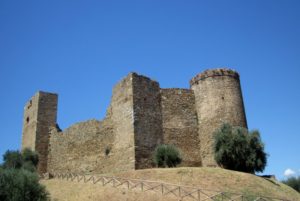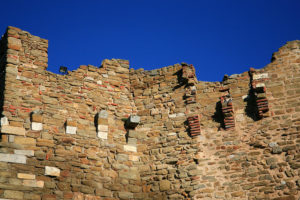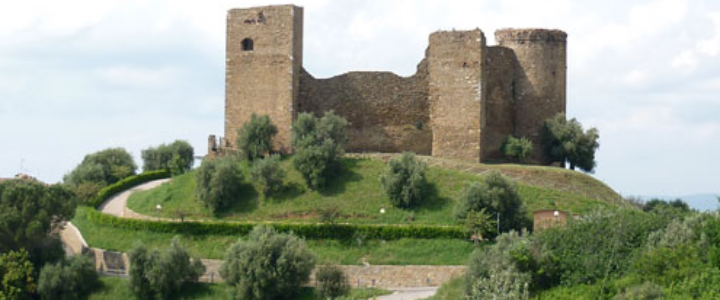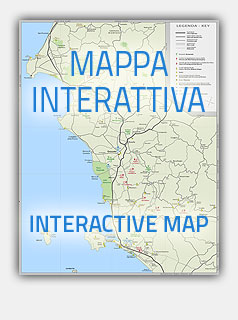Rocca Pisana is located in the highest part of the village of Scarlino. The archaeological excavations carried out between 1979 and 1983, showed that the area was inhabited since the late Bronze Age (XII – X BC) but what about the fortress of Scarlino the first mention of the “curtis” dates back to 973 when the estate was the Aldobrandeschi. Between the eleventh and twelfth centuries the settlement suffered a considerable improvement constructive and a Document of 1277, when the castle was sold by Conti Alberti to the municipality of Pisa, it shows signs of various buildings.
Most of the artifacts found during archaeological excavations are on display in the Territory Riccardo Francovich Documentation Centre, including the “Scarlino Treasury”. The treasure was found during the above mentioned archaeological excavations, he was buried in a hiding place of the fortress, and it is a glazed earthenware vessel containing 100 gold florins coined by seven different mints including Venice, Florence, Rome, Milan and also a Hungarian town. The coins are dated between the fourteenth and fifteenth centuries and allow them to study the circulation of money in the period of the Tuscan city.

La Rocca Pisana si trova nella parte più alta del borgo di Scarlino. Dagli scavi archeologici effettuati tra il 1979 ed il 1983, è emerso che l’area fu abitata fin dalla tarda età del bronzo (secoli XII – X a.C.) ma per quanto riguarda la rocca, la prima menzione della “curtis” di Scarlino risale al 973 quando il possedimento era degli Aldobrandeschi. Tra l’XI ed il XII secolo l’insediamento subì un notevole miglioramento costruttivo e un documento del 1277, anno in cui il castello fu ceduto dai Conti Alberti al comune di Pisa, riporta indicazioni di vari edifici.
La maggior parte dei reperti rinvenuti durante gli scavi archeologici, sono esposti nel Centro di Documentazione del Territorio Riccardo Francovich, tra cui anche il “Tesoro di Scarlino”. Il Tesoro fu rinvenuto durante i sopra menzionati scavi archeologici, era sepolto in un nascondiglio della rocca, e si tratta di un vaso di terracotta invetriata contenente 100 fiorini d’oro coniati da sette zecche differenti tra cui Venezia, Firenze, Roma, Milano ed anche una città ungherese. Le monete sono databili tra il XIV ed il XV secolo ed hanno permesso di studiare la circolazione monetaria della città toscana del periodo.

 coordinate
coordinate








 Home
Home Home
Home